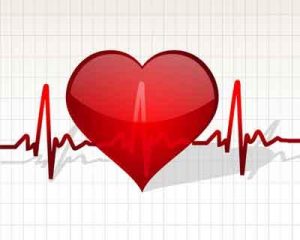- Home
- Editorial
- News
- Practice Guidelines
- Anesthesiology Guidelines
- Cancer Guidelines
- Cardiac Sciences Guidelines
- Critical Care Guidelines
- Dentistry Guidelines
- Dermatology Guidelines
- Diabetes and Endo Guidelines
- Diagnostics Guidelines
- ENT Guidelines
- Featured Practice Guidelines
- Gastroenterology Guidelines
- Geriatrics Guidelines
- Medicine Guidelines
- Nephrology Guidelines
- Neurosciences Guidelines
- Obs and Gynae Guidelines
- Ophthalmology Guidelines
- Orthopaedics Guidelines
- Paediatrics Guidelines
- Psychiatry Guidelines
- Pulmonology Guidelines
- Radiology Guidelines
- Surgery Guidelines
- Urology Guidelines
New PET-CT scan offers more accurate detection of rare heart condition

Washington D.C. [USA] : A team of researchers has come up with a new imaging technique that can diagnose cardiac sarcoidosis much more accurately than traditional tests.
Sarcoidosis is an inflammatory disease that often attacks multiple organs, particularly the lungs, heart and lymph nodes and disproportionately affects African-Americans. Sarcoidosis can be very difficult to diagnose using available tests and available imaging techniques.
Positron emission tomography (PET) scans, and computed tomography (CT) scans, as well as scans that combine information from each, have been used in the diagnosis of cardiac sarcoidosis, but the results are often unclear and hard to interpret, and lead to many false negatives.
The University of Illinois's new combined PET-CT scan technique incorporates a 72-hour high-fat, low-sugar diet before images are taken. The new scan provides much clearer images of sarcoidosis and lets physicians better-detect cardiac sarcoidosis.
The team used the new protocol to investigate the relationship between the presence of cardiac sarcoidosis and sarcoidosis in other parts of the body.
The researchers performed full body (nose to knees) PET-CT scans of 188 patients who followed the 72-hour pre-test diet between Dec. 2014 and Dec. 2015 at the University of Illinois hospital, UI Health. Of the 20 scans that were positive for cardiac sarcoidosis, eight, or 40 percent, revealed sarcoidosis in other parts of the body.
"This study indicates that more extensive, full-body scans of patients with known cardiac sarcoidosis can uncover secondary sites of the disease in a significant number of patients," said researcher Nadera Sweiss. "Knowing there is disease in organs other than the heart changes the way we approach treatment--it allows us to more accurately stage the disease and treat it accordingly."
Sweiss cautioned that the technique for detecting sarcoidosis outside and within the heart needs to be further tested and its ultimate contribution to outcomes in patients with cardiac sarcoidosis will need to be evaluated.
The findings are published in the Journal of Nuclear Cardiology.

Disclaimer: This site is primarily intended for healthcare professionals. Any content/information on this website does not replace the advice of medical and/or health professionals and should not be construed as medical/diagnostic advice/endorsement or prescription. Use of this site is subject to our terms of use, privacy policy, advertisement policy. © 2020 Minerva Medical Treatment Pvt Ltd